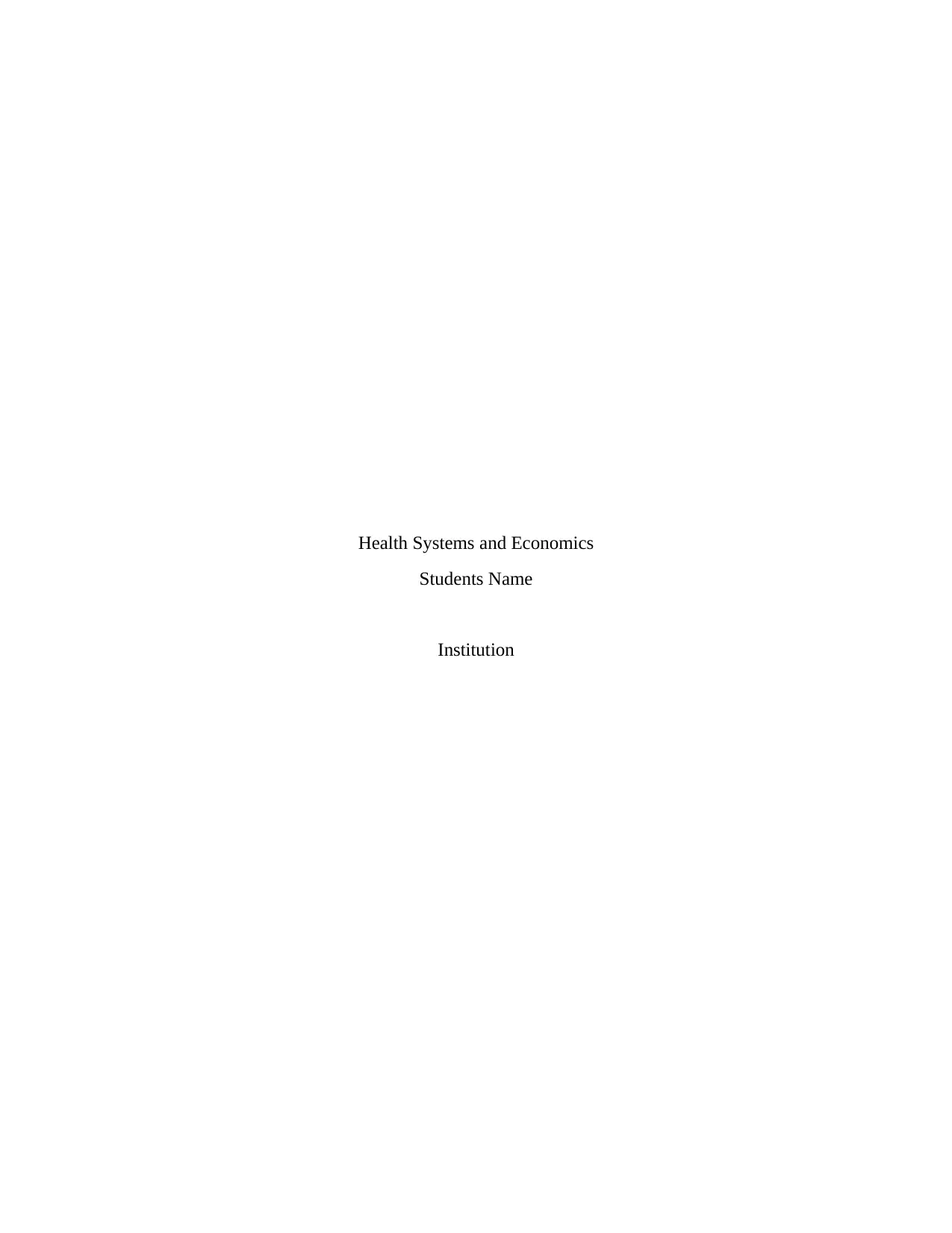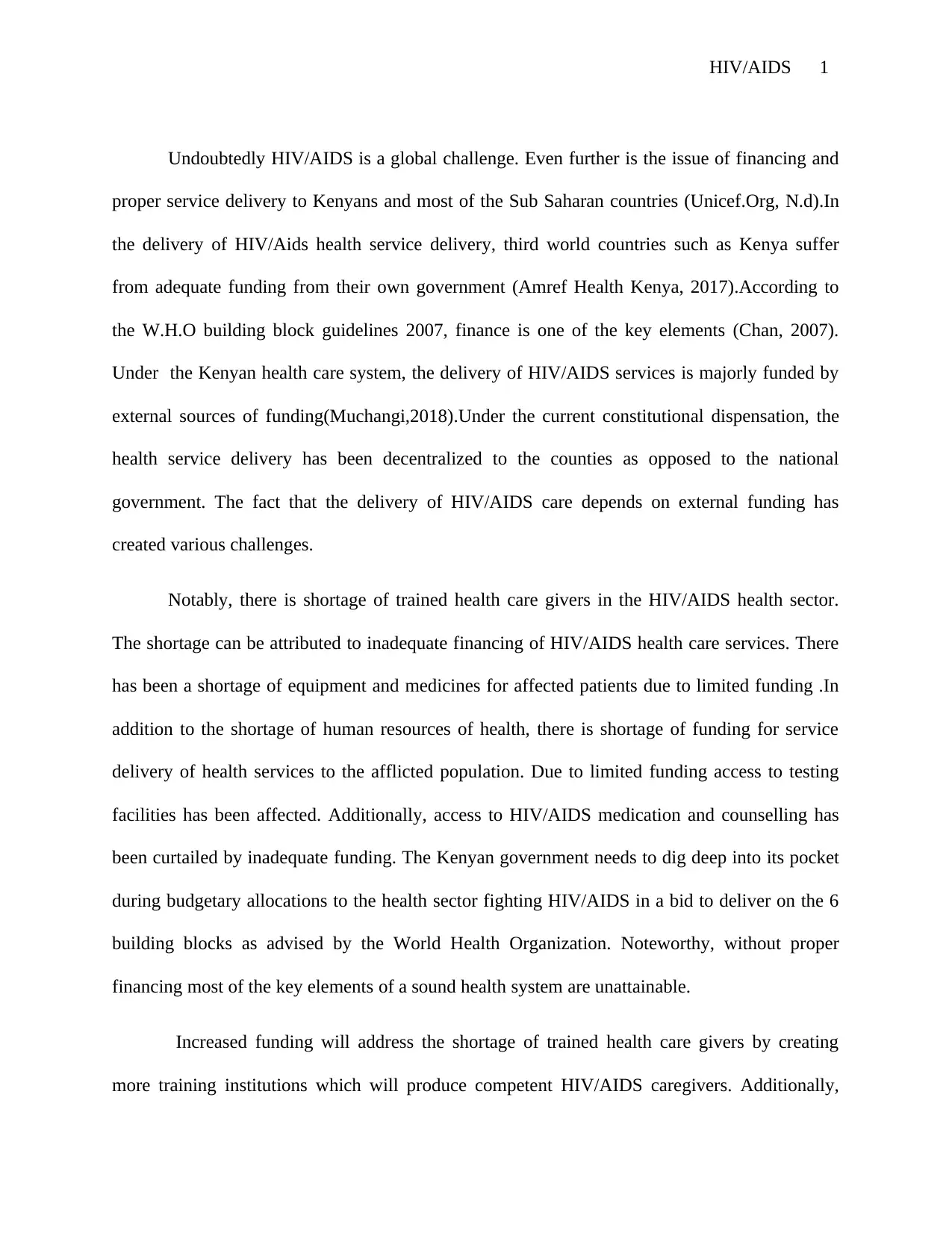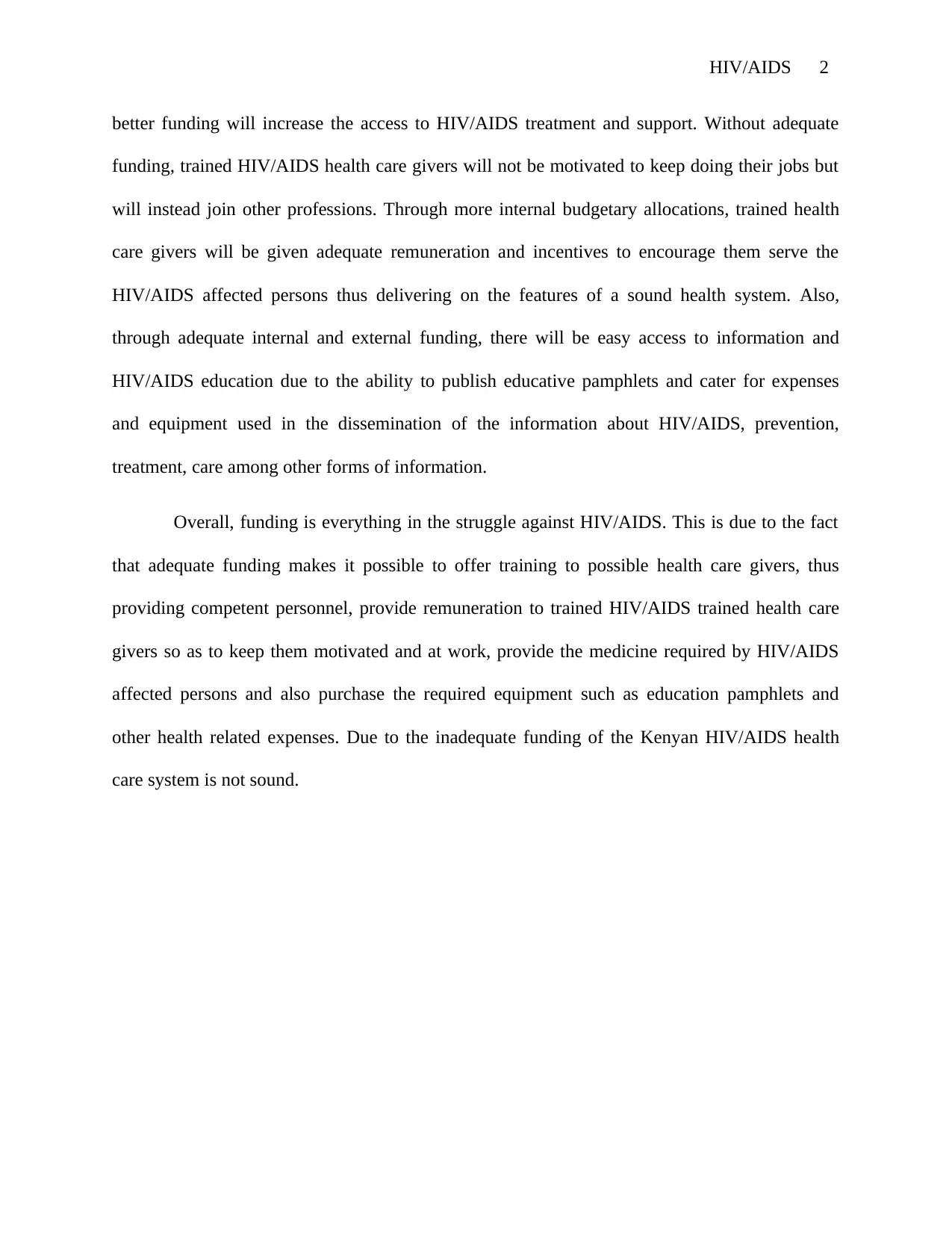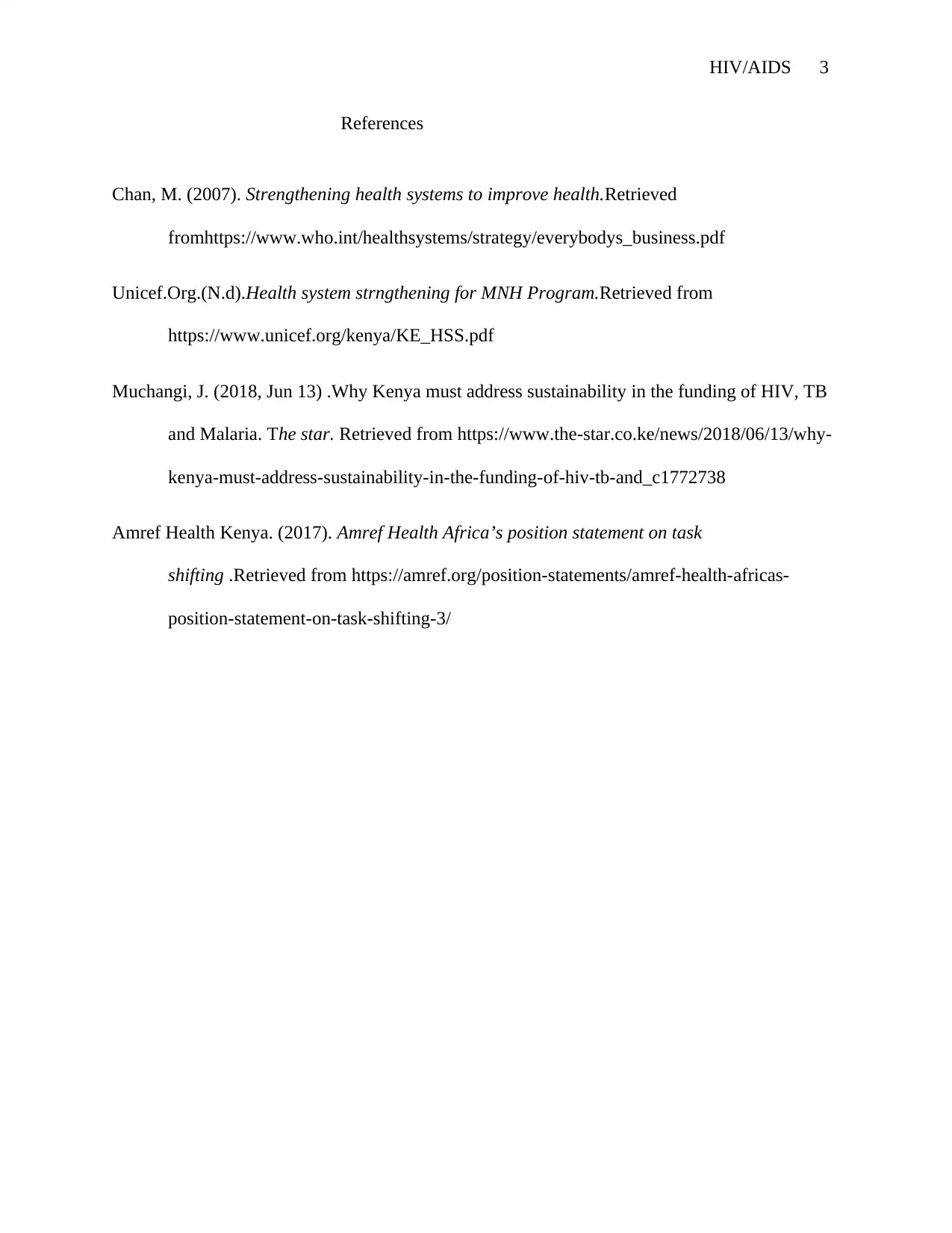Health Systems and Economics: HIV/AIDS Funding in Kenya Case Study
VerifiedAdded on 2023/05/30
|4
|651
|449
Case Study
AI Summary
This case study examines the critical issue of HIV/AIDS funding within the Kenyan healthcare system, particularly focusing on the impact of inadequate financial resources on service delivery. The analysis highlights the reliance on external funding sources, which creates challenges such as shortages of trained healthcare professionals, limited access to equipment and medications, and reduced access to testing, treatment, and counseling services. The study emphasizes the need for increased internal budgetary allocations to address these issues and align with the World Health Organization's building blocks for a sound health system. The document underscores how increased funding can improve the quality of healthcare, incentivize healthcare workers, and enhance access to information and education about HIV/AIDS, ultimately emphasizing the pivotal role of adequate funding in effectively combating the epidemic. The case study underscores the significance of sustainable funding models to ensure the long-term viability and effectiveness of HIV/AIDS healthcare services in Kenya.
1 out of 4










![[object Object]](/_next/static/media/star-bottom.7253800d.svg)